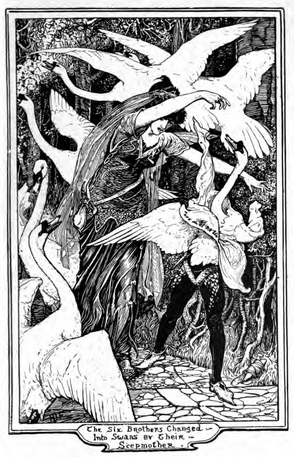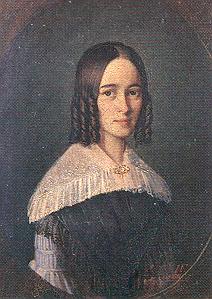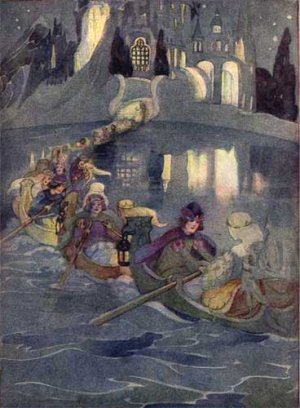 In this gripping book, British author Lyndall Gordon explores the family constellations surrounding Emily Dickinson and the publication of her work. These constellations include the family that ED knew during her lifetime as well as the family of Mabel Loomis Todd, the woman who edited and regularized ED's poetry after her death. (She called it preparing the poems for publication, and she did do much to promote them.) After ED's death in 1886, her remaining family came into a long, sustained conflict with the Todds. This conflict continued throughout the lives of the last remaining Dickinson and the last remaining Todd, and the echoes of this conflict continue even today in the way that scholars and students read ED's poems and the people who inspired her.
In this gripping book, British author Lyndall Gordon explores the family constellations surrounding Emily Dickinson and the publication of her work. These constellations include the family that ED knew during her lifetime as well as the family of Mabel Loomis Todd, the woman who edited and regularized ED's poetry after her death. (She called it preparing the poems for publication, and she did do much to promote them.) After ED's death in 1886, her remaining family came into a long, sustained conflict with the Todds. This conflict continued throughout the lives of the last remaining Dickinson and the last remaining Todd, and the echoes of this conflict continue even today in the way that scholars and students read ED's poems and the people who inspired her.Let's begin with a pictorial family tree of the Dickinsons!
 Apologies for the size of the picture, but it shows the details much more clearly. Gordon looks at more of ED's extended family: a grandmother Gunn with a fierce temper, an invalid male cousin who probably suffered from epilepsy, a maternal aunt who mothered ED, and cousins who were ED's lifelong friends and withheld her letters from the Todds. Of course, Gordon gives us a stronger sense of what ED's mother was like and how her marriage constrained her. These constraints were a social phenomenon. As Gordon points out, poet Julia Ward Howe's husband forced her to abandon her introspective, critical style of poetry. He threatened to divorce her (which meant that he would have custody of their children) unless she stopped writing poetry--or started writing less controversial poetry. We know this less controversial poetry as "The Battle Hymn of the Republic." Closer to home, ED's sister-in-law Sue was bullied and cajoled into marriage to a man whom she did not love. She was not able to pursue the teaching career that she loved. ED's sister Lavinia could not marry the man she loved. On the other hand, ED chose not to marry, a choice that enabled her to write.
Apologies for the size of the picture, but it shows the details much more clearly. Gordon looks at more of ED's extended family: a grandmother Gunn with a fierce temper, an invalid male cousin who probably suffered from epilepsy, a maternal aunt who mothered ED, and cousins who were ED's lifelong friends and withheld her letters from the Todds. Of course, Gordon gives us a stronger sense of what ED's mother was like and how her marriage constrained her. These constraints were a social phenomenon. As Gordon points out, poet Julia Ward Howe's husband forced her to abandon her introspective, critical style of poetry. He threatened to divorce her (which meant that he would have custody of their children) unless she stopped writing poetry--or started writing less controversial poetry. We know this less controversial poetry as "The Battle Hymn of the Republic." Closer to home, ED's sister-in-law Sue was bullied and cajoled into marriage to a man whom she did not love. She was not able to pursue the teaching career that she loved. ED's sister Lavinia could not marry the man she loved. On the other hand, ED chose not to marry, a choice that enabled her to write.Or...as Gordon speculates...did ED's epilepsy free her to write? Here are links to poems that may indicate her epilepsy.
http://www.sanjeev.net/poetry/dickinson-emily/my-first-well-day-since-many-ill-163327.html
http://en.wikisource.org/wiki/I_like_a_look_of_Agony,
http://en.wikisource.org/wiki/I_felt_a_Funeral,_in_my_Brain,
Keep in mind that, in the 1800s, epileptics were not allowed to marry and that they at best lived in seclusion. At worst, they were sent to psychiatric hospitals, and women were more likely be admitted to these institutions. Medical treatment was very primitive, and the most insightful doctor whom ED consulted advised her to stay away from experimental cures and pursue a calm, home bound life.
Below is a picture of a psychiatric hospital on NYC's Blackwell's Island. If you've taken EN 211, you may recognize this place from Margaret Fuller and Fanny Fern's non-fiction.

Below is a picture of ED's home in Amherst, MA.
 Although ED did not marry, perhaps because she did not marry, she experienced several intense relationships. In my previous entry, I mentioned her intimacy with her sister-in-law, Sue, and then with editor, writer, and abolitionist Thomas Wentworth Higginson. ED's relationship with married newspaper editor Samuel Bowles could be described as an entanglement. She sent this poem to him. Could it be about their relationship? Or, as Gordon suggests, could it be a persona poem?
Although ED did not marry, perhaps because she did not marry, she experienced several intense relationships. In my previous entry, I mentioned her intimacy with her sister-in-law, Sue, and then with editor, writer, and abolitionist Thomas Wentworth Higginson. ED's relationship with married newspaper editor Samuel Bowles could be described as an entanglement. She sent this poem to him. Could it be about their relationship? Or, as Gordon suggests, could it be a persona poem?http://www.kalliope.org/digt.pl?longdid=dickinson200108301072
Her correspondence with classmates is both compelling and awkward. Frequently, her classmates chose not to respond to her. Later in life, after her father's death, she became involved with his friend and colleague, Judge Otis Lord, a widower. Her letters to him are lively, charming, and more down-to-earth. The couple even discussed marriage, but it was not to be. Below is a picture of Judge Lord.


I also like how Gordon discusses ED's year at Mount Holyoke Seminary, the first American college for women (pictured above). Academically, her year was successful as the future poet thrived on the college's challenging curriculum. (She studied geology, chemistry, and astronomy among other courses.) However, the college's emphasis on evangelical Christianity isolated ED, for she was very much a skeptic and resisted the college president's attempt to convert the student body en masse. Worse, the college president encouraged students to spy on each other and discouraged them from forming close friendships. ED's roommate and cousin, Emily Norcross, spied on her. Eventually, ED left the college due to "ill health." Does stress bring on seizures?
I did not forget the Todds! It was very hard for me to find a picture of this family: the bewitching Mabel Loomis Todd; her husband, David, a professor of astronomy at Amherst College; and their daughter, Millicent Todd (later Bingham), who continued her mother's work on a more scholarly note. Instead, I found the cover of a collection of Mabel's correspondence with her lover and ED's brother, Austin Dickinson.

Married to a very junior professor at Amherst who was also unfaithful to her, Mabel Loomis Todd was a bright, beautiful young woman in search of...something! Initially, she was Sue Dickinson's protege, but then her flirtatious ways attracted first Sue's son--and then Sue's husband. (Where is Carolyn Hax when you need her?) Mabel also wanted to become friends with ED herself but was unable to. However, after the poet's death, she helped ED's sister Lavinia transcribe the poems for a collection. Mabel's role in the collection became greater and greater even as she strove to alienate her lover from his wife and children and to "feather" her family's nest. (Austin Dickinson was a wealthy, powerful lawyer in Amherst and the college's treasurer. Ironically, he didn't recognize his sister's greatness, but he did help his lover's husband.) I must add, though, that Lavinia didn't pay Mabel and that she didn't recognize how much the younger woman did.
Ultimately, after her lover's death and the publication of two volumes of poetry, Mabel attempted to wrest a parcel of land away from his family. Below is a picture of the Todds' house. It is now a bed and breakfast.

Back to my story...In order to get the land she wanted, Mabel had to first get Lavinia's signature on a deed...as it turned out...under questionable circumstances. It goes without saying Lavinia and Mabel could no longer work together. They went to court over the signature. Lavinia won the suit and its appeal; Mabel locked away the poems and letters that she had been working on. This was in 1898.
By the way, here is a picture from a 2000 recreation of Mabel and her husband's presentations on their expeditions together. One was to Japan where she climbed up to the sixth stage of Mt. Fuji, a remarkable feat for a woman of those days.
The picture below is of a 1906 *summer* climb of Mt. Fuji.

For many years, in fact, over the course of much of the 1900s, the Todds and the Dickinsons fought over ED's work and her public image. Mabel Loomis Todd's editing was heavy handed by our standards, and she fought to slander Sue Dickinson's character and diminish her role in ED's life, but she did much to promote the poet's work, including lecturing on it. Her daughter, Millicent Todd Bingham, a professor of geography, continued the task of promoting ED's work--and her mother's work after MLT died in 1932. She also argued against Martha Dickinson Bianchi's attempts to romanticize her aunt's life. However, MDB's 1914 edition of her aunt's poetry and her subsequent biography drew readers' attention to ED's poetry. Moreover, the critical climate in the early 1900s was more receptive than it had been in the 1890s. A romance novelist, MDB provided her aunt's story with a master narrative: one unhappy love affair had caused her to retreat from society and write poetry. MTB, on the other hand, specifically argued against this master narrative. She published ED's letters to Judge Lord as part of her argument, and she encouraged Yale professor Richard Sewell to write a scholarly biography of ED. This two-volume biography would appear in 1974. Then readers and scholars would be even more receptive to ED and her work.
I'll close with a picture of Sewell's book
 and of some pictures from the Emily Dickinson Museum in Amherst, MA.
and of some pictures from the Emily Dickinson Museum in Amherst, MA.This picture shows more of the museum's gardens.
 Below is a picture of Emily Dickinson's bedroom.
Below is a picture of Emily Dickinson's bedroom.
Finally, below is the cover of the first edition of ED's poems. The painting on the cover is by Mabel Todd Loomis.
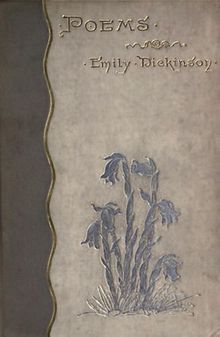
 Emily Dickinson's life has intrigued many people over the years. Why did she withdraw from society, refusing to "cross [her] Father's ground to any House or town"? Why did she write such strangely compelling poetry? Who inspired her?
Emily Dickinson's life has intrigued many people over the years. Why did she withdraw from society, refusing to "cross [her] Father's ground to any House or town"? Why did she write such strangely compelling poetry? Who inspired her?












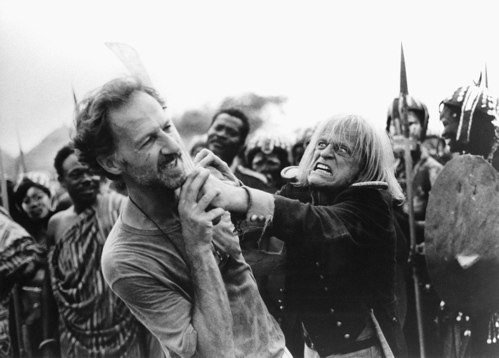







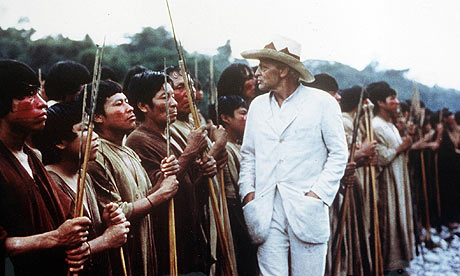
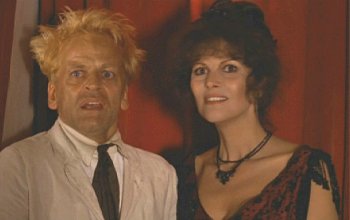

 Americans have...or used to have...a saying that behind every successful man was a strong woman. Valerie Paradiz' study is about the women who provided the Brothers Grimm with their stories and who, for the most part, did not receive any credit for it. Ms. Paradiz argues that this occurred because of eighteenth and nineteenth century attitudes towards women. Women were to be silent and submissive. It goes without saying that they received limited educations. Indeed, the Brothers Grimm severely criticize their fifteen year old sister Lotte for mourning their mother's death and being unable to devote herself to domesticity the way that their mother had. Wilhelm Grimm had a very problematic relationship with Annette von Droste-Hulshoff, a bright, feisty young woman who would later become a noted writer. In fact, von Droste-Hulshoff's picture appeared on a West German stamp in 1961.
Americans have...or used to have...a saying that behind every successful man was a strong woman. Valerie Paradiz' study is about the women who provided the Brothers Grimm with their stories and who, for the most part, did not receive any credit for it. Ms. Paradiz argues that this occurred because of eighteenth and nineteenth century attitudes towards women. Women were to be silent and submissive. It goes without saying that they received limited educations. Indeed, the Brothers Grimm severely criticize their fifteen year old sister Lotte for mourning their mother's death and being unable to devote herself to domesticity the way that their mother had. Wilhelm Grimm had a very problematic relationship with Annette von Droste-Hulshoff, a bright, feisty young woman who would later become a noted writer. In fact, von Droste-Hulshoff's picture appeared on a West German stamp in 1961.
